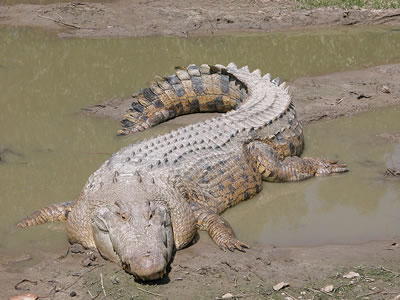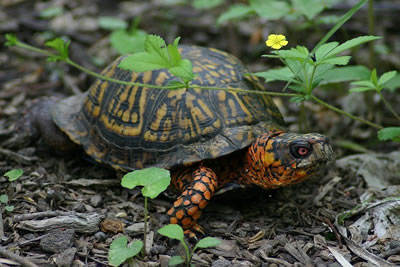Reptiles

Facts about creatures
- Home
- Animal Classification
- Animal Habitats
- Amphibians
- Arthropods
- Bats
- Birds
- Carnivorans
- Cetaceans
- Chordates
- Crustaceans
- Dinosaurs
- Diprotodonts
- Elephants
- Fish
- Golden Mole
- Insects
- Lagomorphs
- Mammals
- Mammal Teeth
- Marsupial Mole
- Metamorphosis
- Mollusks
- Primates
- Reptiles
- Rodents
- Ruminants
- Soricomorphans
- Tenrec
- Tetrapods
- Vertebrates
Reptiles
Reptiles include snakes, lizards, alligators, crocodiles, caimans, gharials, false gharials, Tuataras, turtles, tortoises and terrapins.
The word reptile comes from the Latin word for “creeping” or “crawling”.
Reptiles are tetrapods and amniotes.
They are adapted to living on land.
All reptiles have lungs, which they use to breathe air.
A reptile’s skin is watertight and covered with dry scales.

Reptiles are cold-blooded (ectothermic).
The smallest living reptiles on Earth are two species of gecko (a type of lizard) that live in the Caribbean – the Virgin Islands Dwarf Sphaero (Sphaerodactylus parthenopion) and the Jaragua Sphaero (Sphaerodactylus ariasae).
These geckos are about three fifths of an inch long, excluding the tail.
The largest reptile in the world today is the saltwater crocodile (Crocodylus porosus), which lives in India, Southeast Asia and Australia. An adult male can grow up to 17 feet long.

Reproduction
Reptiles usually reproduce sexually.
All reptiles have a cloaca, a hole at the base of the tail that is used for both excretion and reproduction.
Male reptiles often have penises.
Most reptiles are oviparous (lay eggs). Reptile eggs have a hard, waterproof covering.
Some reptiles bear live young (are viviparous).

A female reptile that bears live young may have an organ similar to the placenta that is found in placental mammals, or she may be ovoviviparous.
Ovoviviparity occurs when the mother retains her eggs inside her body, and the young inside the egg are nourished by egg yolks.
Reptiles do not undergo metamorphosis. A reptile never goes through a larval stage. It looks like a small adult as soon as it hatches or is born.
Classification
Reptiles (Reptilia) form a taxon (a group of organisms that are placed together) according to the Linnaean classification system. In this system, all living things on Earth are divided into a small number of Kingdoms. These Kingdoms are then subdivided these kingdoms further and further.
Linnaean classification groups organisms according to their physical characteristics.
Under the more modern system of classification known as cladistics, which is based on evolutionary relationships, reptiles do not form a clade.
A clade is a group of organisms that share a common ancestor. No organisms outside the clade have that common ancestor.
According to cladistics, reptiles form a paraphyletic group. This means that all members of the group have a common ancestor, but some of the descendants of that ancestor are not part of the group.
A group that contains an organism and all of its descendants is known as a monophyletic group.
Reptiles, birds, mammals, dinosaurs and some other extinct animals share a common ancestor.
Therefore, together they form a monophyletic group, or clade.
Snakes, lizards, crocodiles and tuataras are more closely related to birds than they are to turtles and tortoises.
© 2008 – 2023 animalfacts.net
Privacy Policy